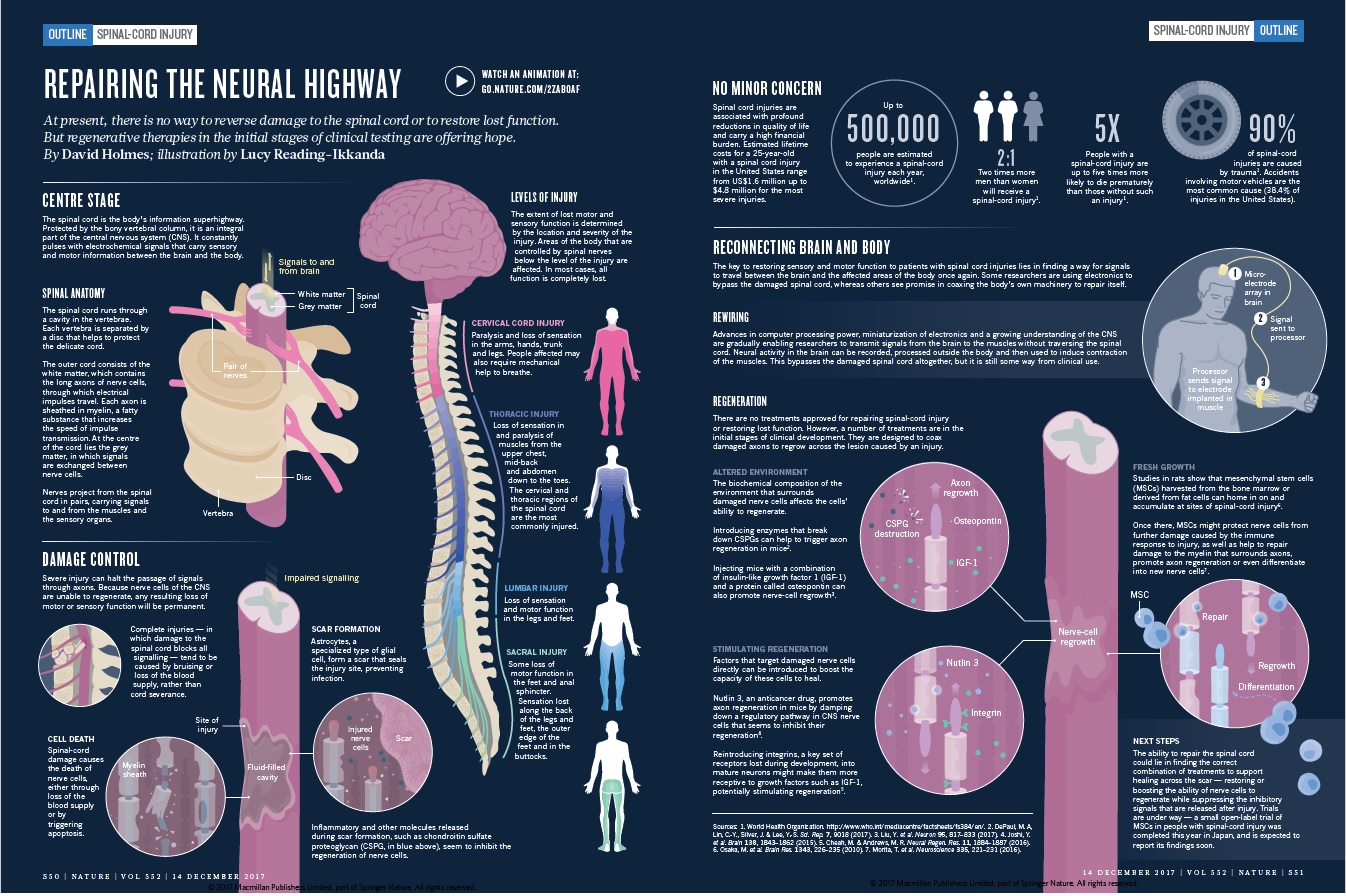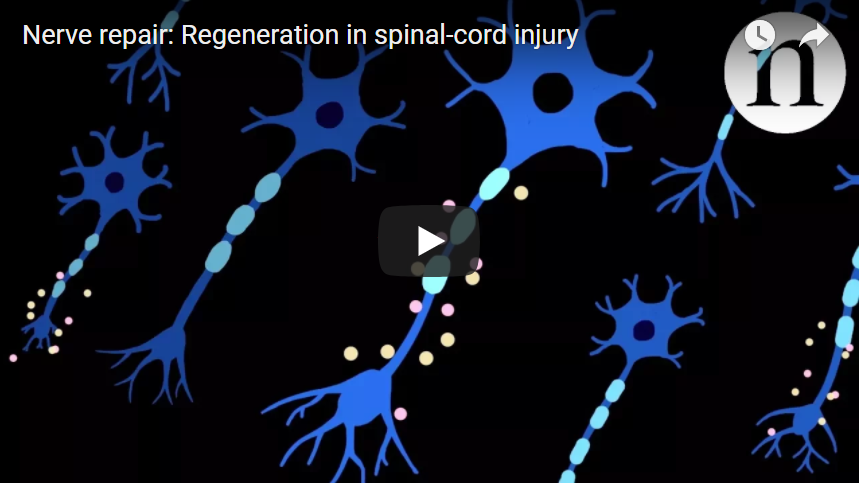Repairing the neural highway
14 December 2017


At present, there is no way to reverse damage to the spinal cord or to restore lost function. But regenerative therapies in the initial stages of clinical testing are offering hope.
© 2017 Macmillan Publishers Limited, part of Springer Nature. All rights reserved.
Read this next
Research Highlight | 21 December 2018
Preventing spinal cord injuries is a numbers game
A longitudinal investigation at the Hyogo Rehabilitation Center suggests that age-targeted preventative strategies could reduce the incidence of spinal cord injuries
Infographic | 21 June 2017
Marching to a new beat
In the most severe cases, a ruptured eardrum can require surgery to put it right, but tissue-engineering techniques might provide a much simpler solution.
Infographic | 23 August 2017
Saving life and limb
Many people with critical limb ischaemia have no option but to have the affected limb amputated. Can regenerative medicine offer an alternative?


